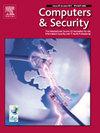超攻击图:构建用于网络威胁情报分析的超图
IF 4.8
2区 计算机科学
Q1 COMPUTER SCIENCE, INFORMATION SYSTEMS
引用次数: 0
摘要
网络安全专家正在积极探索和实施自动化技术,以便从网络威胁情报中提取和呈现攻击信息。然而,网络威胁情报中的安全实体之间存在多种关系,现有技术往往忽略了这一特点。此外,在分析和展示过程中将外部安全知识直观地整合到网络威胁情报中也是一项挑战。我们提出了超攻击图(HAG)框架,这是首个将超图数据结构应用于网络威胁情报分析的工作。我们的方法采用联合提取模型,其中包含多头选择机制,可有效解决安全实体间多种关系的提取问题。我们使用超图来展示网络威胁情报中的战术和技术。我们在 685 份真实世界的网络威胁情报报告中对 HAG 框架进行了评估,结果显示,与现有技术相比,安全实体提取的 F1 分数提高了 11.12%,关系提取的 F1 分数提高了 6.71%。此外,HAG 能够在超图上直观地表示外部安全知识,这表明它有潜力成为网络安全分析的重要工具。本文章由计算机程序翻译,如有差异,请以英文原文为准。
Hyper attack graph: Constructing a hypergraph for cyber threat intelligence analysis
Cybersecurity experts are actively exploring and implementing automated technologies to extract and present attack information from Cyber Threat Intelligence. However, there are multiple relations among security entities within Cyber Threat Intelligence, a feature that existing technologies often overlook. Additionally, integrating external security knowledge into cyber threat intelligence intuitively during analysis and presentation poses challenges. We propose the Hyper Attack Graph (HAG) framework, the first work to apply hypergraph data structures in the analysis of cyber threat intelligence. Our approach uses a joint extraction model that incorporates a multi-head selection mechanism, effectively addressing the extraction of multiple relations among security entities. We use hypergraph to display tactics and techniques in cyber threat intelligence. Our evaluation of the HAG framework on 685 real-world cyber threat intelligence reports shows an increase in the F1 score for security entity extraction by 11.12% and for relation extraction by 6.71% over existing efforts. Furthermore, HAG’s ability to visually represent external security knowledge on hypergraphs demonstrates its potential as a valuable tool in cybersecurity analysis.
求助全文
通过发布文献求助,成功后即可免费获取论文全文。
去求助
来源期刊

Computers & Security
工程技术-计算机:信息系统
CiteScore
12.40
自引率
7.10%
发文量
365
审稿时长
10.7 months
期刊介绍:
Computers & Security is the most respected technical journal in the IT security field. With its high-profile editorial board and informative regular features and columns, the journal is essential reading for IT security professionals around the world.
Computers & Security provides you with a unique blend of leading edge research and sound practical management advice. It is aimed at the professional involved with computer security, audit, control and data integrity in all sectors - industry, commerce and academia. Recognized worldwide as THE primary source of reference for applied research and technical expertise it is your first step to fully secure systems.
 求助内容:
求助内容: 应助结果提醒方式:
应助结果提醒方式:


